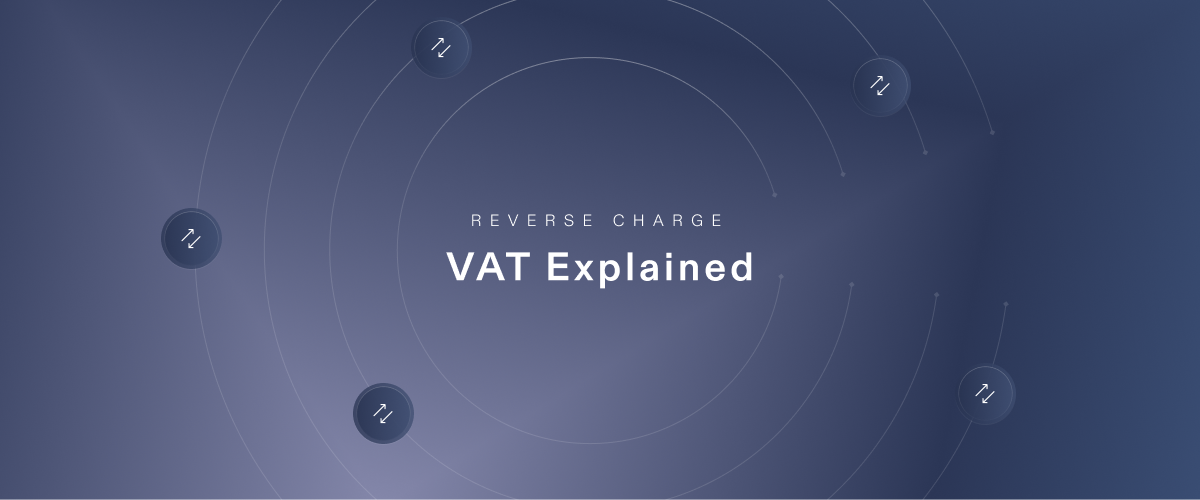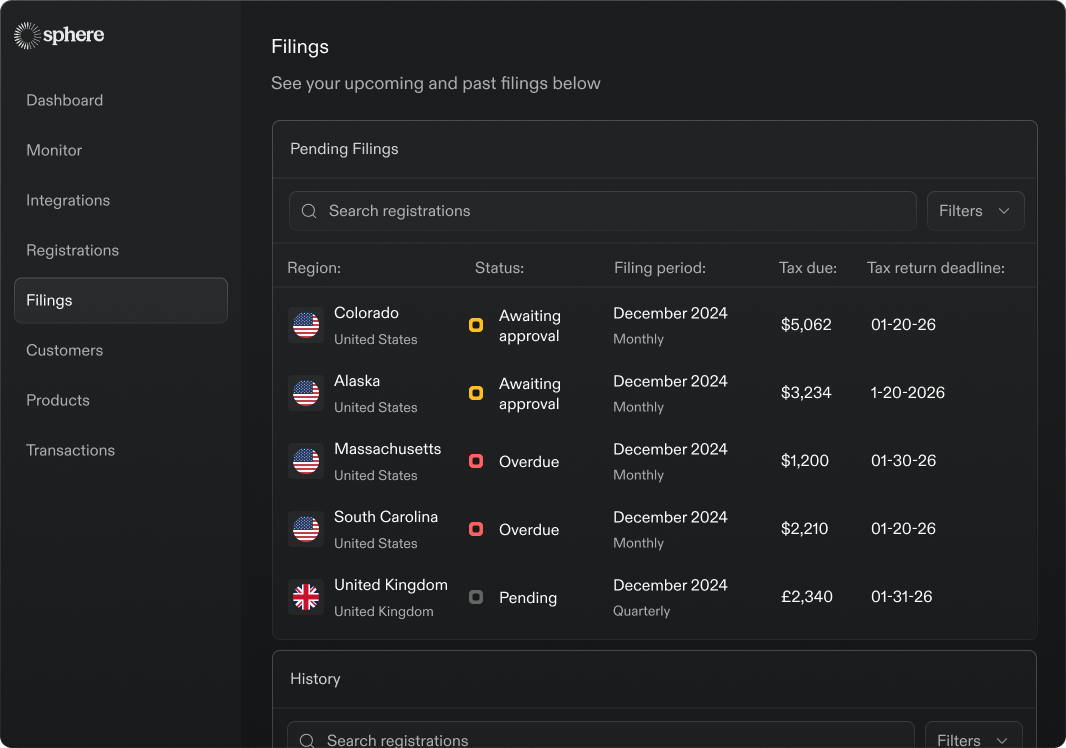
What is Reverse Charge VAT?
Value added tax (VAT) is an indirect tax generally levied on buyers at all stages of the supply chain. In most cases, in the approximately 175 countries where VAT applies, the seller collects the VAT from the customer and then remits the funds collected to the country’s taxing authority.
But in some cases, businesses are allowed to apply the “reverse charge” mechanism. This allows businesses who sell to other businesses to, under certain conditions, issue an invoice stating that the “reverse charge” applies. The seller in that case, does not charge VAT to the buyer, and then does not have to collect, report and remit VAT on that transaction.
The buyer instead self-assesses the VAT that would have been due on the transaction in their own local VAT return. In the EU such self-assessed VAT can be deducted in the same VAT-return to the extent the buyer has the right to deduct input VAT.
In other jurisdictions, the buyer may have to pay the self-assessed VAT to the tax authorities and (to the extent possible) credit this self-assessed VAT at a later stage.
To sum it up, if you’re not required to collect VAT, allowing your buyer to instead self-assess (i.e. applying the reverse charge mechanism) does not trigger any adverse consequences for your business.
Why does the reverse charge mechanism exist?
The reverse charge mechanism simplifies cross border business by not requiring businesses who have no other tax obligations in a country to register for and collect VAT. The reverse charge mechanism also combats tax fraud by unregistered remote businesses by placing the onus of VAT compliance on in-country registered businesses.
When Does the Reverse Charge VAT Apply?
Reverse charge VAT generally applies to businesses in countries with VAT but only under certain conditions, including:
Supplier not established locally – A supplier (seller) does not have a physical presence or other presence in a country, which means they’re required to register for that country’s VAT system. If they are locally established, a supplier can’t take advantage of the reverse charge mechanism and should instead simply charge, report, and remit and pay VAT as required.
Customer is a “VAT taxable person” – The customer in principle must qualify as a taxable “person” for VAT purposes. In this case, a taxable “person” is any person or entity engaged in economic activities (i.e. a business). The primary indicator that your customer is a taxable person — and that the reverse charge mechanism applies — is that they provide a valid VAT ID. Note that certain jurisdictions provide for an online database to verify the validity of the VAT-ID provided by a customer. For example, EU VAT-ID’s can be validated through the EU VIES database.
If the customer is not in the EU, you will generally be required to verify that their tax ID from their own country is valid instead.
Countries That Use the Reverse Charge VAT Mechanism
EU Member States
Under the EU VAT Directive, cross-border B2B supplies of certain services e.g. electronically supplied services or online services (such as SaaS), are eligible to apply the reverse charge mechanism.
Some EU Member States also apply a reverse charge in domestic situations. In the Netherlands for instance, each B2B transaction which is taxable in the Netherlands, whereby the buyer is established in the Netherlands, and the seller is not, a local reverse charge mechanism applies. The latter will be introduced EU-wide under the upcoming VAT in the Digital Age (ViDA) changes.
However, until the new ViDA rules kick in each EU Member State gets to make their own rules when it comes to which transactions must be subject to domestic reverse charge and thus recommend to always verify the VAT consequences of certain transactions with your advisor.
Furthermore, under the EU VAT Directive, the reverse charge mechanism is mandatory in certain high-fraud sectors like construction, telecommunications, electronics, natural gas/electricity, and investment gold.
This places the onus of VAT on the buyer, even in domestic transactions, to ensure proper tax collection.
UK: Post Brexit VAT Reverse Charge
Though now divorced from the EU’s VAT system due to Brexit, the UK still uses a reverse charge approach to cross-border transactions.
Like many EU countries, the UK also implements a domestic reverse charge (DRC) on building and construction services transactions. That means buyers, not suppliers, are responsible for paying VAT on these transactions.
Countries Where Reverse Charge Can Be Applied
More than 165 VAT and GST countries allow the reverse charge mechanism, including:
- Australia
- Canada (with the exceptions of British Columbia, Manitoba and Saskatchewan) (GST)
- Egypt
- European Union
- Georgia
- India (GST)
- Indonesia
- New Zealand (GST)
- Norway
- Saudi Arabia
- Singapore (GST)
- South Africa (as of 1 April 2025)
- South Korea
- Switzerland
- United Arab Emirates
- United Kingdom
- Vietnam
Note that some countries have Goods and Services Tax (GST) rather than VAT and these have been indicated with (GST).
Sphere helps you track which countries allow you to apply the reverse mechanism and automatically updates your invoices to be compliant when a valid VAT or GST ID is provided.
Countries Where Reverse Charge Cannot be Applied
- Japan - has a reverse charge, but very limited in scope
- Kenya
- Malaysia
- Nigeria
Some Canadian provinces, like British Columbia, Manitoba, and Saskatchewan also do not allow suppliers to apply the reverse charge mechanism. Always check with the tax authority before attempting to apply a reverse charge.
Check with your tax advisor or the local tax authorities before attempting to apply a reverse charge.
Reverse Charge Mechanism Examples
Below are some examples of when a supplier/seller might apply the reverse charge mechanism:
Cross-Border SaaS Sales (EU Example)
A SaaS company based in Poland sells a year’s worth of services to another company based in Sweden. In this case, the supplier in Poland can apply the reverse charge mechanism. The buyer in Sweden will be responsible for reporting and remitting the VAT due over the transaction in their own Swedish VAT return.
Domestic Construction Industry (UK Example)
The UK has implemented a Domestic Reverse Charge (DRC) on sales in the construction and building industry to combat unusually high historical instances of VAT fraud in this industry. In this case, the buyer (usually a contractor, but can also be the end customer) is responsible for paying VAT. The supplier, i.e., the builder or materials supplier, is required to implement the reverse charge mechanism to ensure that the buyer/end user pays the VAT due.
Postponed VAT Accounting (Imports Example)
Some countries with VAT allow businesses to postpone their VAT payments on imports in an accounting method known as postponed VAT accounting (PVA). With this method, a business imports goods and the VAT on the import is technically due when the goods arrive at the border. But instead, PVA allows businesses to instead apply the VAT payment on their imported goods to their next (usually quarterly) VAT filing and remittance instead. PVA facilitates the flow of business and stops physical goods from being held up in customs.
Not all VAT countries allow PVA, and the countries that do allow PVA most likely will apply conditions under which PVA is allowed (e.g. licenses, guarantees, etc).
How Reverse Charge Works: Understanding the VAT Flow
To understand how reverse charge works, it's helpful to know the difference between input tax and output tax. Input VAT is the VAT a business pays on purchases, while output tax is the VAT a business collects on sales. Under normal VAT rules, businesses offset their input tax against their output tax during VAT reporting.
With reverse charge, the foreign supplier doesn't collect output tax from the buyer. Instead, the domestic buyer reports both the input VAT (as a purchase) and output tax (as if they made the sale to themselves) on their VAT return. This ensures compliance with VAT rules while simplifying cross-border supplies of goods and services.
How to Implement Reverse Charge VAT Compliantly
Step 1: Verify Customer VAT IDs
To determine whether the reverse charge mechanism can be applied, you must first verify whether your customer qualifies as a VAT taxable person i.e. qualifies as B2B. The primary indicator(s) of your customers qualifying as such will differ per jurisdiction. As mentioned from an EU perspective one can assume that a customer is a VAT taxable person (B2B) if the seller has been provided with a valid VAT-ID of the buyer.
However, as mentioned, some jurisdictions may allow the use of a reverse charge, even if the supplier has not been provided with a valid VAT-ID by the buyer. To ensure full VAT compliance and to optimize your overall VAT position, the following steps are recommended to sellers:
1. Align your customer onboarding process with (EU) VAT requirements:
- Define an approach for determining the VAT status of each customer.
- Establish a process for determining the customer’s location for VAT purposes.
2. Consider OSS registration for EU B2C supplies:
- If you make B2C supplies (i.e. supplies whereby the B2B status of customers cannot be substantiated) within the EU, ensure you are registered for the One Stop Shop (OSS) scheme to simplify VAT reporting and compliance. Sphere would be more than happy to assist you in this matter.
3. Consider local VAT consequences for sales to buyers who are located outside the EU.
4. Include clear provisions in your general Terms & Conditions:
- Address and minimize liabilities in cases where a customer provides incorrect information regarding their VAT status or location.
Step 2: Structure Your Reverse Charge Invoice Correctly
Invoices where the reverse charge is applied require extra information.
Structure invoices like normal, with supplier and buyer’s info, date, invoice number, and list of supplies of goods or services sold and their prices.
But to stay compliant with reverse charge rules, add a note stating something like:
- “Reverse charge: VAT to be accounted by the purchaser” or
- “0% VAT (reverse charge)”
Payment processors like Stripe allow you to collect VAT numbers and adjust your invoices so that you are applying the reverse charge mechanism in a compliant manner (more information on how to do this in Stripe here). However, note that these payment processors do not validate tax IDs which is a critical component in applying the reverse charge mechanism correctly. Sphere automatically pulls VAT IDs from your billing system, verifies them and adjusts your invoices to apply the reverse charge mechanism compliantly.
Reverse Charge VAT: Make It Work for Your Business
Reverse charge VAT helps simplify cross-border sales by shifting tax responsibility to the buyer, who likely already has tax responsibility in a country. This reduces the need for foreign VAT registrations, the need for which have historically led to tax noncompliance by the foreign company (often accidentally).
When applied correctly, the reverse charge mechanism makes international sales easier while also keeping tax authorities happy and their coffers full of the funds they need for budget items like schools, roads, and hospitals.
Businesses who sell cross-border can do business without the administrative hassle of complying in multiple foreign countries, and business flows smoothly between suppliers and buyers.
Selling cross-border? Sphere can help. With Sphere, cross-border businesses can:
- Automate VAT ID validation – No more searching for each country’s official VAT ID database and manually checking VAT numbers before you can invoice.
- Streamline invoicing – Apply the reverse charge mechanism and send the right invoice to qualified customers.
- Register, file and remit sales tax in multiple countries and jurisdictions – In the case that your business activities do require that you comply in a foreign country, Sphere handles those nitpicky administrative tasks for you–all for a flat fee of $100 per jurisdiction per month.








.png)
.png)
.png)





